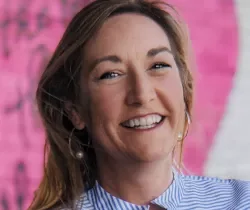Exhibitors in a broad Ascend Media study shared some major pain points recently published by the firm. It’s feedback worth digging into, and worth digging into EARLY in experience design, not late. It’s worth elevating these ideas to a strategic planning level and finding solutions for the stakeholders that financially support your events.
We are addressing the Top 10 Concerns in a series of posts that outline solutions for supporting exhibitors in a virtual environment. We’ve distilled the Top 10 pain points into four big ideas to present solutions.
The 4 Big Ideas for Exhibitor Satisfaction:
- Help Us Engage
- Don’t Hinder Efforts
- Teach the Tech
- Make Good Choices
No. 4: Make Good Choices
What exhibitors said:
“The platforms need to be more agile so we can make updates to our booths at any time.”
“Exhibitors should be able to put all types of media in booths. Allowing videos, for example, at just one sponsorship level seems punitive.”
What to do about it:
This final post of the four reviewing the Top 10 exhibitor complaints is my favorite as a mother. Making good choices requires thinking ahead. It means being intentional about decision-making, from the foundational level such as vendor partner selection to being strategic in designing the overall experience right down to the tactical yes or no of enabling individual features or selecting package benefits.
Making good choices is often best when approaching the event with a design thinking perspective. Design thinking requires you to
- Empathize with your stakeholders
- Define their needs
- Ideate how you can solve them
- Create solutions to refine
- Test and measure results to optimize
Note this starts with stakeholders. This starts with walking in other people’s shoes. Designing any event to be optimally successful requires a deep understanding of purpose and differentiators -- the WHY someone would want to attend, exhibit or sponsor. From there, align with partners who can align with your mission. For digital platforms, you can go with a DIY setup or an end-to-end solution. There are hundreds to choose from, but just a few who will align with your goals once you get clear about them.
When it comes to turning on features or building out the virtual event, organizers are often faced with choices like allowing exhibitors to upload three videos or none, allowing them to join in conference sessions or not, permitting 1-to-1 chat, limiting the number of times they can be suggested by the AI engine for a buyer-seller match. This will seem to be a painstaking process if the bigger picture is not held in focus.
Do exhibitor, attendee and organizer needs all need to be met? Yes. Are they often at odds? Not when tactical decisions are approached with strong strategic experience design and an abundance mindset.
Make good choices.
Don’t miss any event-related news: Sign up for our weekly e-newsletter HERE and engage with us on Twitter, Facebook, LinkedIn and Instagram!



Add new comment